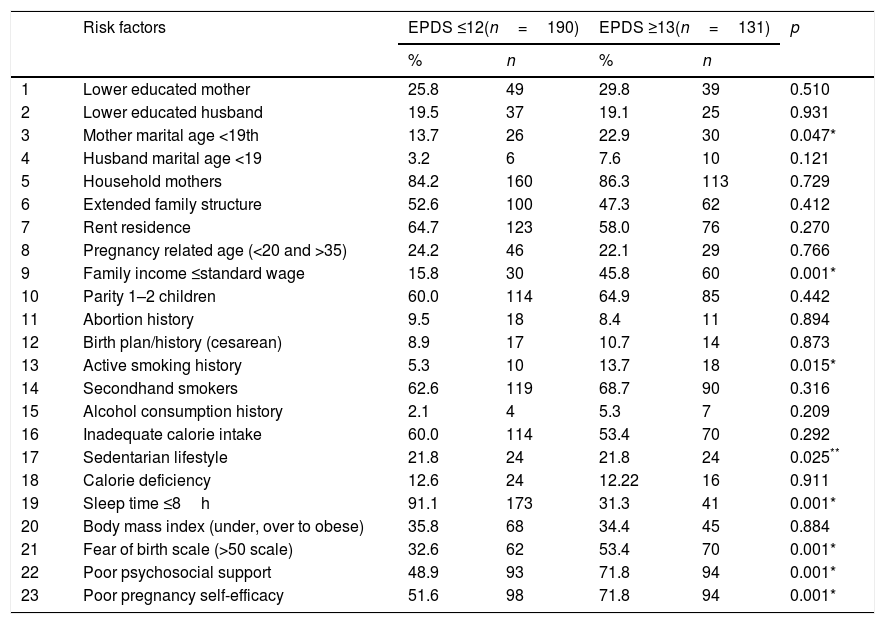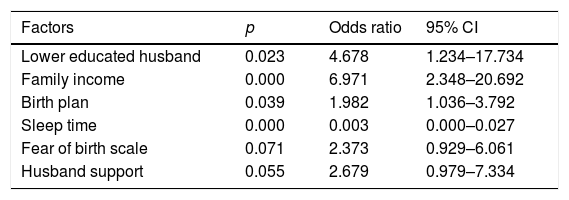This study aimed to assess and identifying potential multifactor risks to aggravate the state of maternal depression in pregnant women.
MethodsThe cross-sectional study approach conducted in the sub-urban area of Makassar City, South Sulawesi, Indonesia. Data gathered from 329 research subjects from January to May 2019. The main instruments used are EPDS and several other valid instruments related to various observed risk factors including, sociodemographic, psychosocial, obstetric factors, nutritional factors, history of alcohol use, and exposure to the cigarette.
ResultsThe prevalence of depressive symptoms is quite high found in the sub-urban low-income family area. Family income (6.9±95% CI; 2.34–20.69), husband education (4.6±95% CI; 1.23–17.73), birth plan (1.9±95% CI; 1.03–3.79), sleep time (0.003±95% CI; 0.00–0.02), fear of birth (2.3±95% CI; 0.92–6.06), and husband support (2.6±95% CI; 0.97–7.33) are the most fit indicate model to describe depression symptom among pregnant mother.
ConclusionCreating sufficient, more comfortable, efficient screening tools to remove time barriers in measuring all risk factors, consider a promising program in the prenatal term. The antenatal care visit must provide a risk factor assessment to eliminate further problems during postpartum.
Artículo
Comprando el artículo el PDF del mismo podrá ser descargado
Precio 19,34 €
Comprar ahora








